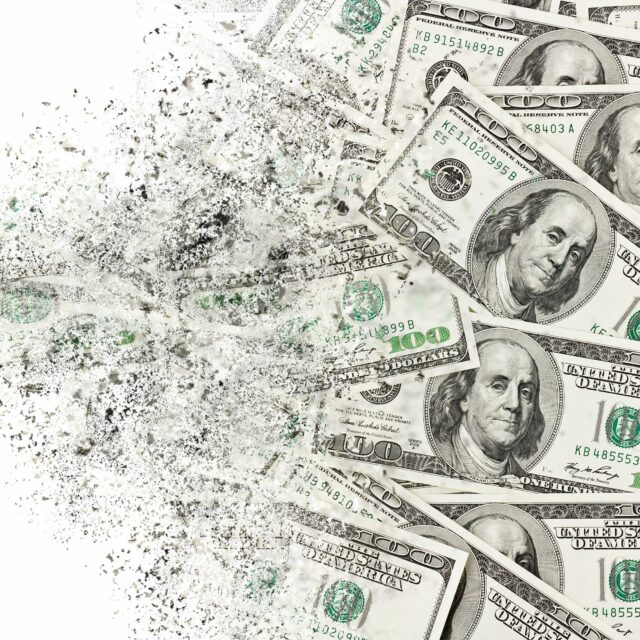Will CPIH inflation understate inflation for April 2020?
The ONS intends to alter the way it computes the CPIH index in response to the CV19 Lockdown and social distancing (ONS 2020). Partly this has to do with the collection of prices: partly with the calculation itself. Indeed in yesterday’s published minutes of the MPC, the problems of the scope of collection and the availability of certain price series was highlighted.

The ONS intends to alter the way it computes the CPIH index in response to the CV19 Lockdown and social distancing (ONS 2020). Partly this has to do with the collection of prices: partly with the calculation itself. Indeed in yesterday’s published minutes of the MPC, the problems of the scope of collection and the availability of certain price series was highlighted. The resultant CPIH will tend to overstate the fall in inflation because it gives excessive weight to items in the basket which may have falling prices (petrol, clothing and footwear) and very little demand in Lockdown (see Dixon, NIESR PP #16).
Usually, local collection of prices involves about 80% of all price quotes, which represent 45% CPIH by expenditure weight. Under the lockdown associated with CV19 a move to this by collecting as many prices as possible online, or by phone interview or email. Items are classified as “available” or “unavailable”. An item is available “if it is possible for a consumer to purchase it either from outlets that remain open or through alternative means, such as the internet”. An item is unavailable if it is not possible to purchase it (for example a restaurant meal or theatre visit). For CPIH and CPI there are 90 items which are unavailable which together represent 16.3% of CPIH and 20.2% of CPI.
Where possible, the ONS intends to keep the existing expenditure weights. It will not capture the changed expenditure patterns: partly to keep the inflation time-series consistent, and partly because expenditure patterns are currently unknown and may shift as the lockdown is eased. It also needs to keep the CPIH statistic in line with international conventions. However, the method that the ONS has chosen is equivalent to reweighting expenditure due to the method of imputation adopted by the ONS.
First, let’s assume that all of the available items have at least 20% of their usual number of observations and so will be viewed as valid by the ONS. The inflation rate across the available items can then be calculated: basically, the item weights of the available items are rescaled to add up to 1 and the inflation rate is calculated in the normal manner.
For unavailable items, their “weight” will be redistributed across all of the available items. This is done by using the aggregate monthly growth of all available, non-imputed items to “impute” the inflation of the unavailable goods This is equivalent to enlarging the weight of the available goods to cover the unavailable.
There are two minor complications. Firstly, seasonal goods (2.1% of CPIH weight and 2.6 of CPI). If the good is classified as “seasonal”, the imputation is done using the annual growth rate rather than the monthly growth rate. Secondly, there will be some “available goods” for which there are not enough observations (this is reviewed if the price quotes are less than 20% of normal). In these cases, the ONS might decide to impute the price. The imputation is done either from a “parent index” (imputing from items that are in the same COICOP category). If that is not possible, then if the good has a “stable price”, the price is assumed to remain unchanged. Lastly, if neither of the previous two options work, the item is given the inflation rate of the rest of the available goods (annual for seasonal items).
To return to the imputation for unavailable items: it is imputed from the inflation across all non-imputed goods (the subset of available goods which are not imputed). For those items which are imputed, in effect their expenditure weight is reallocated across the non-imputed. Imputation is equivalent to giving a zero weight to the imputed items and reallocating that weight evenly across the non-imputed so the shares all add up to one.
However, the resultant CPIH measure will not reflect the overall changed expenditure shares during the lockdown. This is because it will include many goods and services which whilst “available” are affected by the lockdown. The “available items” include petrol and diesel: these are still being sold, but at much reduced volumes. Likewise, all of the items in the “Clothing and Footwear” category are included: there are “available” online but expenditure on these items is much smaller during lockdown. The expenditure shares of the available items is not lockdown adjusted. The April CPIH published in May will include these items at normal weights and since the prices will have fallen will tend to reduce CPIH in the coming months.
One approach we have explored at NIESR is to alter the expenditure weights to reflect how the expenditure shares have altered (Dixon April 2020). Unavailable goods should have a zero weight, but even some “available” items will have much reduced shares. The lockdown weights of Clothing and Footwear, Petrol and diesel should all be reduced. This will mean that the resultant NIESR CPILW measure of inflation for April will probably be greater than the ONS CPIH.
Whilst the ONS method of imputation goes some way to reducing the expenditure shares of “unavailable” goods, it does not go far enough. It does not capture the effect of the Lockdown and social distancing on the goods that are available but much less in demand. Ultimately unless we can construct new expenditure baskets for the goods bought in Lockdown we must treat the numbers with some care at present, which will ultimately make the task of inflation targeting problematic.




















